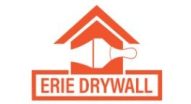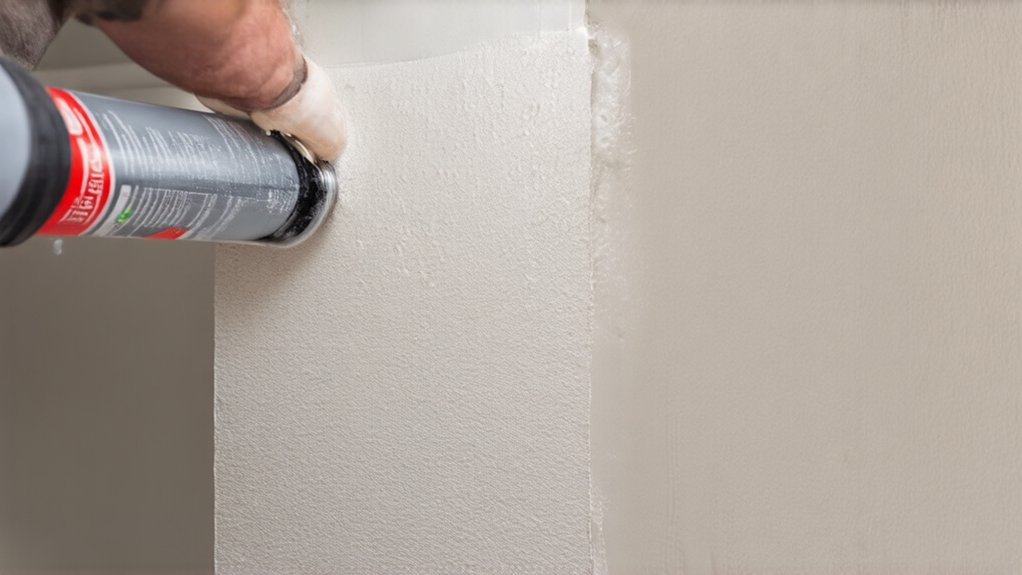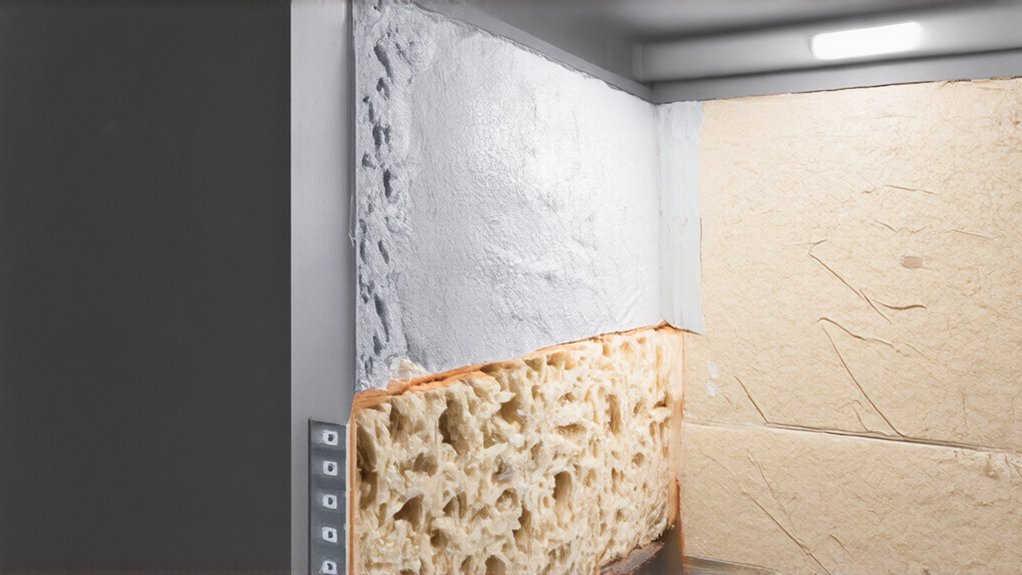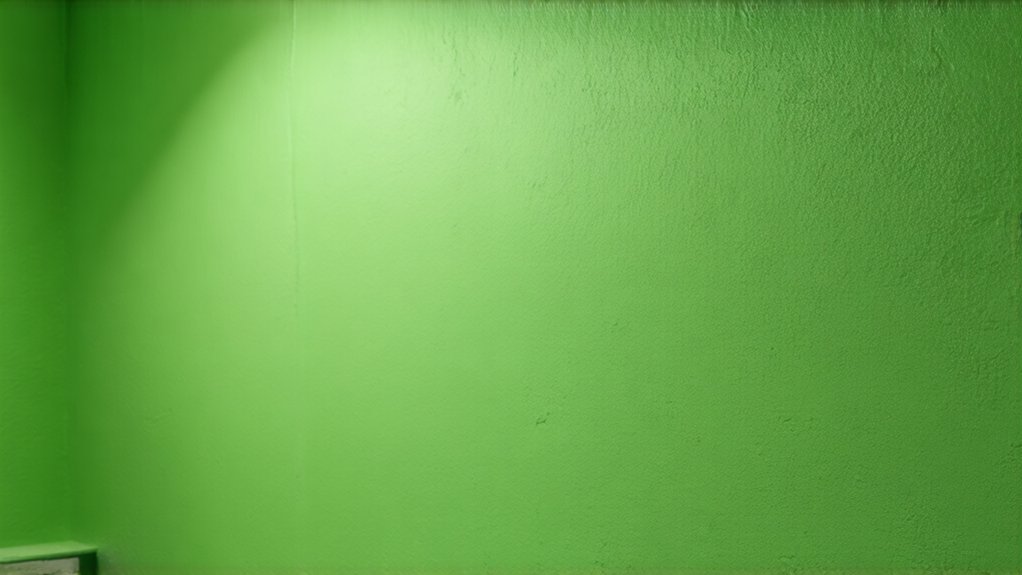To prevent drywall moisture absorption, you'll want to control humidity levels with dehumidifiers and exhaust fans. Use moisture-resistant drywall materials like green board in high-humidity areas. Seal wall seams with specialized joint compounds and apply waterproof coatings. Guarantee proper ventilation by running fans during showers and cooking. Regular inspections can identify potential water damage early. Stay proactive, and you'll protect your home's structural integrity – explore more strategies that can save you thousands in repairs.
Identifying Common Sources of Moisture in Your Home
While moisture might seem like an invisible enemy, it's surprisingly common in many homes. Bathrooms, kitchens, and laundry areas often generate high humidity levels that can compromise your wall insulation properties. Drywall repair techniques can help mitigate moisture damage by addressing structural vulnerabilities early. Poor air circulation patterns can trap moisture, causing potential damage to your drywall. Condensation from windows, plumbing leaks, and inadequate ventilation contribute extensively to moisture buildup. You'll want to pay attention to areas near water sources, exterior walls, and spaces with limited airflow. Identifying these moisture hotspots early helps prevent long-term structural issues and protects your home's integrity.
Waterproofing and Sealing Drywall Effectively
Safeguard your drywall by controlling waterproofing and sealing techniques that prevent moisture damage. You'll want to start by applying waterproof coatings designed specifically for drywall protection. These specialized sealants create a barrier that stops moisture from penetrating the surface, keeping your walls dry and strong.
Sealing drywall seams is another critical step in moisture prevention. Use high-quality, moisture-resistant joint compound and tape to close potential entry points for water. By taking these proactive measures, you'll protect your home from potential water damage and maintain the integrity of your walls. Professional drywall contractors in Erie, PA recommend regular inspections to catch moisture issues early and prevent extensive damage.
Using Moisture-Resistant Drywall Materials
Beyond traditional waterproofing techniques, selecting the right drywall materials can dramatically reduce moisture absorption. You'll want to choose moisture-resistant drywall designed specifically for high-humidity areas like bathrooms and basements. Green board and purple board are excellent options that offer superior moisture protection compared to standard drywall.
When installing, apply a high-quality drywall primer that creates an additional moisture barrier. Consider using moisture-resistant paint as a final protective layer. These specialized materials won't just prevent water damage—they'll give you peace of mind and help maintain your home's structural integrity.
Controlling Indoor Humidity Levels
Most homeowners don't realize that controlling indoor humidity is vital to preventing drywall moisture absorption. You'll want to maintain an ideal indoor temperature between 68-72 degrees Fahrenheit and guarantee adequate air circulation throughout your living spaces.
Invest in a reliable dehumidifier for rooms with higher moisture levels, like bathrooms and basements. Regularly use exhaust fans when cooking or showering to reduce ambient humidity. Strategic ventilation and consistent monitoring can dramatically reduce the risk of drywall moisture damage.
Proper Ventilation Techniques to Prevent Moisture Buildup
After addressing indoor humidity control, implementing proper ventilation becomes the next critical step in protecting your drywall from moisture damage. You'll want to focus on creating effective air circulation throughout your home.
Use exhaust fans in bathrooms and kitchens to remove excess moisture, and consider installing whole-house ventilation systems. Open windows strategically during dry days to promote air exchange.
Ceiling fans and portable fans can also help with effective dehumidification, reducing the likelihood of moisture seeping into your drywall. By maintaining consistent airflow, you'll greatly minimize potential water absorption risks.
Regular Maintenance and Early Detection of Water Damage
Since water damage can silently compromise your drywall's structural integrity, you'll want to develop a proactive maintenance strategy that catches potential issues early. Establish consistent inspection schedules that help you monitor your walls for subtle signs of moisture intrusion.
Look for discoloration, soft spots, or slight bubbling that might indicate underlying water problems. Implementing effective drying techniques after any water exposure can prevent long-term damage and protect your home's walls. By staying vigilant and addressing moisture concerns promptly, you'll maintain your drywall's health and avoid costly repairs down the line.
Frequently Asked Questions
Can Mold Grow on Drywall Even if It Looks Dry?
Yes, mold can grow on drywall even when it appears dry. If the drywall's moisture content is high enough, you'll provide the perfect breeding ground for visible mold growth, even if the surface seems completely dry to the touch.
How Quickly Does Moisture Damage Drywall?
If you're not careful, drywall can absorb moisture rapidly, leading to potential structural issues within 24-48 hours. Its high moisture absorption rate means you'll want to address water exposure quickly to prevent lasting damage.
Is Drywall Ruined Forever After Water Exposure?
You'll need quick action if your drywall's been exposed to water. Not all damage is permanent—assess hidden moisture pockets and address excess water absorption promptly. Professional inspection can determine whether repair or replacement is necessary for your home's integrity.
What's the Difference Between Water-Resistant and Waterproof Drywall?
You'll find water-resistant drywall offers limited moisture protection, while waterproof drywall provides superior vapor barrier performance. They're not the same—water-resistant types minimize absorption, but waterproof options completely block moisture, giving you peace of mind in damp environments.
Can I Repair Moisture-Damaged Drywall Myself?
You'll want to carefully check for structural integrity before tackling moisture damage. Evaluate repair options based on the extent of damage—minor issues you can DIY, but extensive water harm might require professional help to guarantee a safe, lasting fix.



